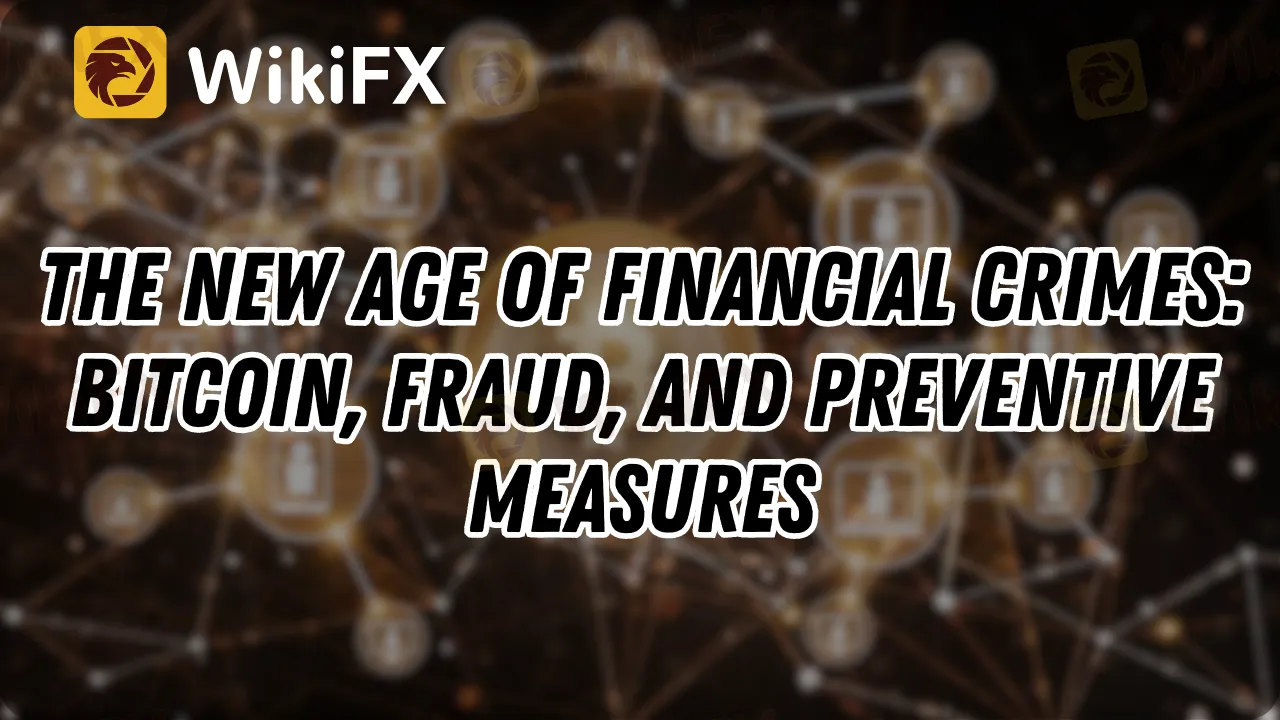简体中文
繁體中文
English
Pусский
日本語
ภาษาไทย
Tiếng Việt
Bahasa Indonesia
Español
हिन्दी
Filippiiniläinen
Français
Deutsch
Português
Türkçe
한국어
العربية
The New Age of Financial Crimes: Bitcoin, Fraud, and Preventive Measures
Abstract:Explore the intricacies of modern financial crimes, Bitcoin's role in fraud and scams, and how businesses can implement preventive measures to mitigate risk.

Introduction
In a world increasingly moving towards digitization, the financial landscape has undergone significant changes. This has, however, ushered in an age of increased vulnerability where financial crime has become a major concern globally. Every business, regardless of size or industry, seeks ways to protect itself and reduce the risk of falling victim to financial crime. While the thought of such crimes might seem daunting, there are measures available that can significantly enhance financial fraud detection and mitigate losses.
Understanding Financial Crime
Financial crime encompasses a broad spectrum of fraudulent activities aimed at deceitfully producing wealth. This typically involves a misuse of insider information for personal gain, deceitful acquisition of another person's property, or deception to obtain material benefits for oneself or another party. The core objective of such actions is to achieve a material profit.
A notable form of financial fraud is money laundering, which is typically employed to hide the proceeds of a crime from the law. This crime, unlike others, does not involve dishonestly taking a benefit but rather serves to safeguard an already-obtained benefit or make it easier to secure one.
Types of Financial Crimes
The spectrum of financial embezzlement is vast and includes fraud, cybercrime, bribery, corruption, financing of terrorism, misuse of the market, and insider trading.

Who Commits Financial Crime?
Financial fraud can be committed by a wide array of individuals and organizations. These include terrorist organizations using large-scale fraud to finance their activities, corrupt leaders plundering their nation's financial resources, senior executives or business leaders falsifying financial data to misrepresent a company's financial situation, and employees of all ranks stealing assets from the business.
Moreover, investment scams can be committed by clients, suppliers, contractors, or third parties unaffiliated with the business. An emerging trend shows collaboration between an employee and an external embezzler to produce better outcomes more rapidly. Finally, there are successful individual criminals or serial fraudsters who commit financial scams to retain their ill-gotten gains.
Why Financial Crime Happens
A multitude of factors contribute to the prevalence of financial crime. Experts have argued over the possibility of creating a precise criminal profile to help businesses catch criminals during or even before the crime. The five major factors to consider are the motivations and justifications of offenders, the likelihood of a crime being committed, the offenders' technical and organizational skills, the risk of detection after the crime has been committed, and the consequences of fraud discovery.
Preventing Financial Crimes
To protect your business from financial fraud, it's crucial to get your risk management right. A comprehensive risk assessment taking into account all financial crime risks across all areas of the business leads to the creation of effective policies. Keeping track of legal changes and ensuring policy compliance is equally essential. Additionally, learning from one's own and others' mistakes, especially those that have led to criminal prosecutions or regulatory enforcement proceedings, is invaluable.

The Role of Bitcoin in Financial Crime
The emergence of cryptocurrencies like Bitcoin has added another layer to the complexity of financial crime. Bitcoin fraud and money laundering have become increasingly common, where fraudsters use Bitcoin exchanges and mixing services to hide the origin of their illicit gains, distance themselves from the crime, and withdraw funds securely through a Bitcoin exchange.
Conclusion
In conclusion, financial crime is a grave concern with potentially severe implications for both individuals and businesses. While it can be challenging to monitor these crimes, advancements in technology offer tools to mitigate the risk. The best way to prepare is to educate oneself about the various facets of financial crime and prevention methods, remembering that while you may think “No, it won't happen to me,” it could.

FAQs
Q1. What are the 3 most important components of financial crime? A. Motivation, opportunity, and rationalization are the three key components behind financial crime.
Q2. Why is it important to prevent financial crime? A. Financial fraud poses risks to all businesses, from financial institutions to retailers and charities. Thus, prevention is paramount.
Q3. How are cryptocurrencies used in money laundering? A. Fraudsters often use Bitcoin exchanges and mixing services to conceal the source of their illegal gains, creating an illusion of legitimacy and enabling them to withdraw funds securely.
Stay updated on the latest financial crime trends and news by downloading and installing the WikiFX App on your smartphone: https://www.wikifx.com/en/download.html

Disclaimer:
The views in this article only represent the author's personal views, and do not constitute investment advice on this platform. This platform does not guarantee the accuracy, completeness and timeliness of the information in the article, and will not be liable for any loss caused by the use of or reliance on the information in the article.
Related broker
Read more

STARTRADER Issues Alerts on Fake Sites and Unauthorized Apps
STARTRADER warns against counterfeit sites and apps using its brand name. Protect yourself by recognizing official channels to avoid fraudulent schemes.

PayPal Expands PYUSD Transfers to Ethereum and Solana
PayPal's PYUSD stablecoin can now transfer across Ethereum and Solana, enhancing flexibility for users through a LayerZero cross-chain integration.

Crypto Scammer Pleads Guilty in $73 Million “Pig Butchering” Fraud
The scammer behind a $73 million pig butchering scheme has pleaded guilty to defrauding victims through fake cryptocurrency investments.

Influencer-Led $232M Crypto Scam Exposed in South Korea
South Korean authorities recently dismantled a large-scale cryptocurrency scam, allegedly orchestrated by a popular YouTuber referred to as Mr. A, which misled over 15,000 investors and amassed nearly 325.6 billion Korean won (approximately $232.7 million USD).
WikiFX Broker
Latest News
JUST Finance and UBX Launch Multi-Currency Stablecoin Exchange
XM Revamps Website with Sleek Design and App Focus
Global Shift in Cryptocurrency Taxation: Italy and Denmark Chart New Paths
Webull Introduces 24/5 Overnight Trading to Extend U.S. Market Access
TradingView & Mexico’s Uni. Partnership, to Enhance Financial Education
Something You Need to Know About SogoTrade
eToro Launches Global-Edge Smart Portfolio: A Balanced Approach to Growth and Stability
Darwinex advises traders to update MT4 & 5
Revolut X Expands Crypto Exchange Across Europe, Targeting Pro Traders
Broker Review: Is Exnova Legit?
Currency Calculator


